- genevb's home page
- Posts
- 2025
- 2024
- 2023
- 2022
- September (1)
- 2021
- 2020
- 2019
- December (1)
- October (4)
- September (2)
- August (6)
- July (1)
- June (2)
- May (4)
- April (2)
- March (3)
- February (3)
- 2018
- 2017
- December (1)
- October (3)
- September (1)
- August (1)
- July (2)
- June (2)
- April (2)
- March (2)
- February (1)
- 2016
- November (2)
- September (1)
- August (2)
- July (1)
- June (2)
- May (2)
- April (1)
- March (5)
- February (2)
- January (1)
- 2015
- December (1)
- October (1)
- September (2)
- June (1)
- May (2)
- April (2)
- March (3)
- February (1)
- January (3)
- 2014
- December (2)
- October (2)
- September (2)
- August (3)
- July (2)
- June (2)
- May (2)
- April (9)
- March (2)
- February (2)
- January (1)
- 2013
- December (5)
- October (3)
- September (3)
- August (1)
- July (1)
- May (4)
- April (4)
- March (7)
- February (1)
- January (2)
- 2012
- December (2)
- November (6)
- October (2)
- September (3)
- August (7)
- July (2)
- June (1)
- May (3)
- April (1)
- March (2)
- February (1)
- 2011
- November (1)
- October (1)
- September (4)
- August (2)
- July (4)
- June (3)
- May (4)
- April (9)
- March (5)
- February (6)
- January (3)
- 2010
- December (3)
- November (6)
- October (3)
- September (1)
- August (5)
- July (1)
- June (4)
- May (1)
- April (2)
- March (2)
- February (4)
- January (2)
- 2009
- November (1)
- October (2)
- September (6)
- August (4)
- July (4)
- June (3)
- May (5)
- April (5)
- March (3)
- February (1)
- 2008
- 2005
- October (1)
- My blog
- Post new blog entry
- All blogs
RT Ticket 2561: TPC efficiency vs. pT
In response to RT ticket 2561, I wrote a simple Monte Carlo to test the effect of the TPC geometry on efficiency vs. pT. It appears to me that I can qualitatively (almost quantitatively) match the embedding results that have a dip in efficiency around 1.0-1.5 GeV/c. One might be able to fiddle with the parameters of the Monte Carlo to make it match even better.
Assumptions:
Running my Monte Carlo with different values of F give the following results:
I repeated this with everything the same except doubling the size of the gap between sectors to π/120. This makes it easier to lose tracks in the gap even with curvature, so the dip in efficiency moves to lower pT:
The macro used to run the Monte Carlo and generate these plots is attached. Run it compiled as: root -l -b 'rt2561.C+(0.7)'
-Gene
Assumptions:
- TPC active volume between radius in [60,200] cm, but only 20% acceptance below 123 cm to simulate spaced inner padrows
- TPC active volume gap between sectors is π/240 (i.e. each sector loses 1/80th of its π/6 width on each side)
- Hit reconstruction efficiency is 90%
- Track findind efficiency on top of that is 90%
- A minimum required fraction F of the possible hits must be found (this replicates cuts on the Nhits/Npossible)
Running my Monte Carlo with different values of F give the following results:
| F=0.5 | 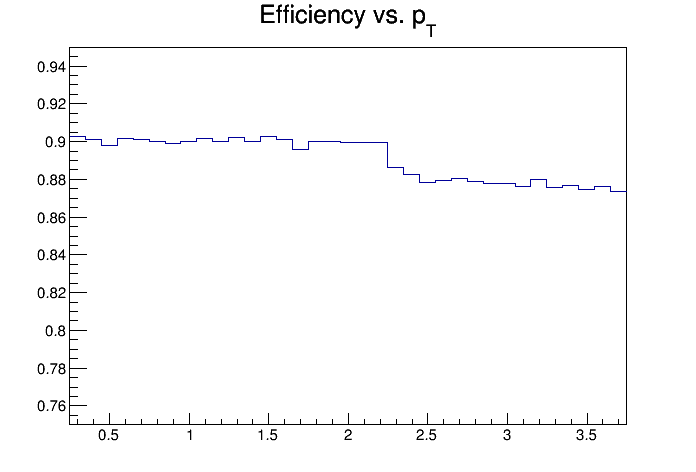 |
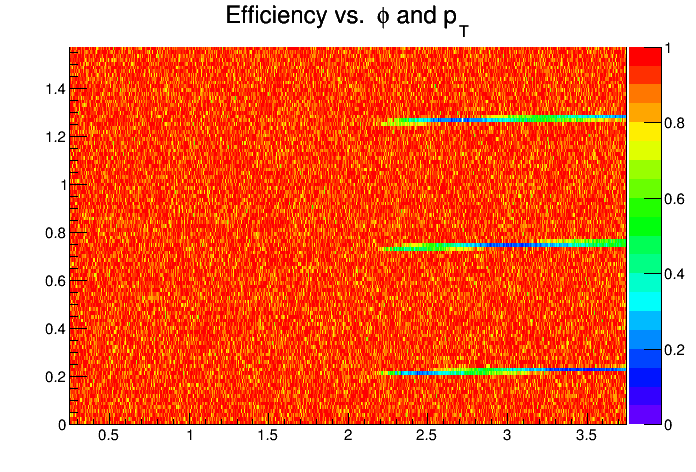 |
|---|---|---|
| F=0.6 | 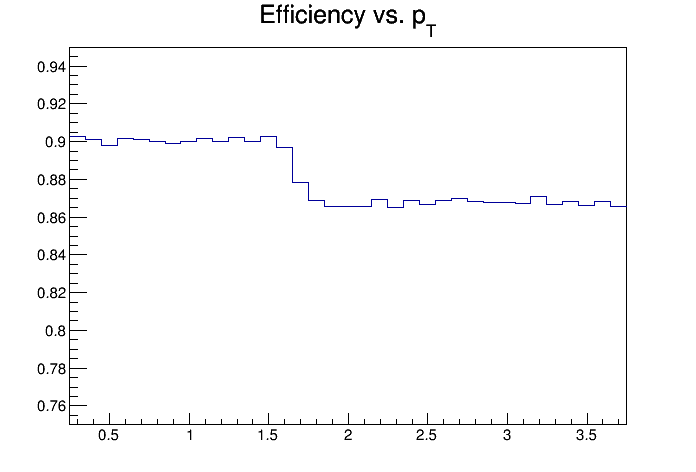 |
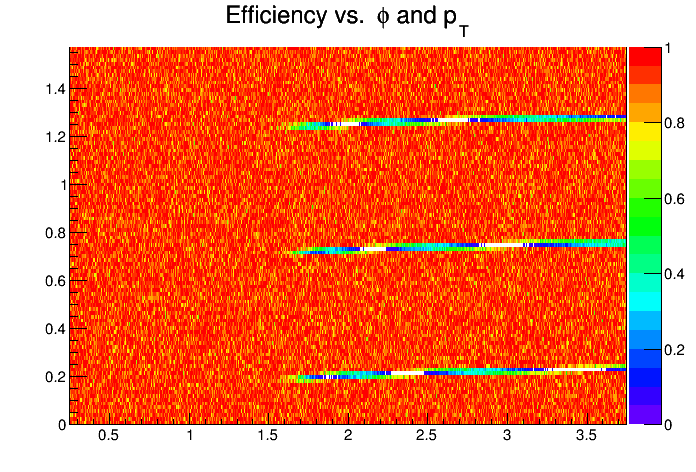 |
| F=0.7 | 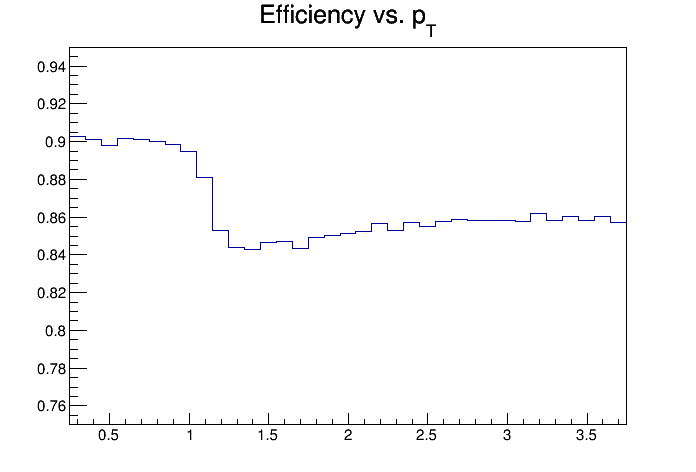 |
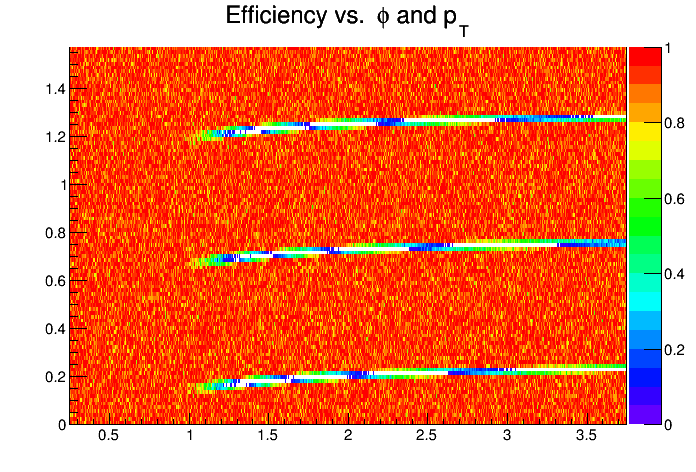 |
| F=0.75 | 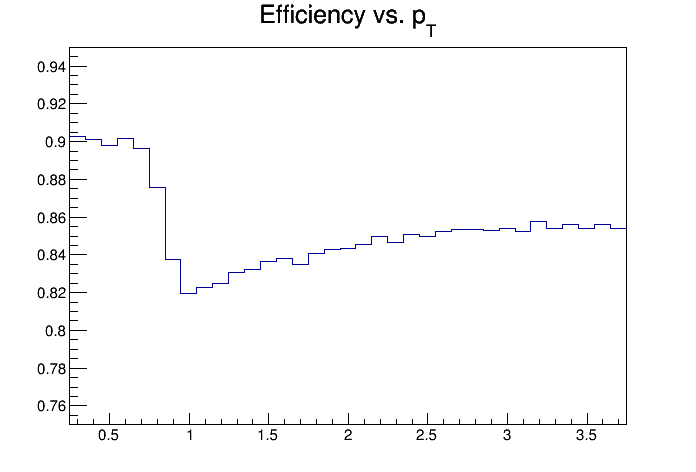 |
 |
| F=0.8 | 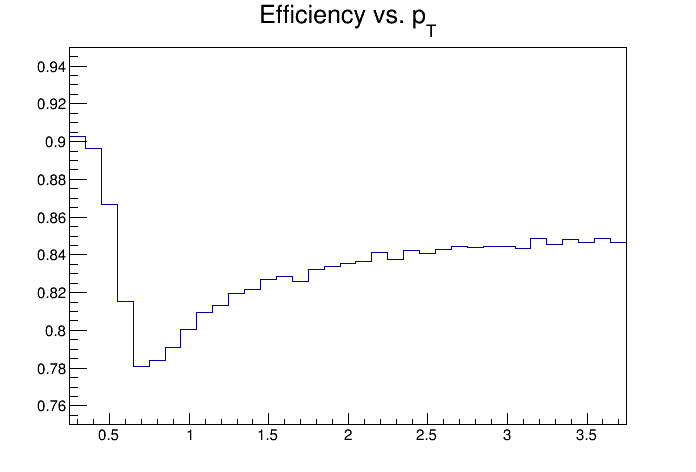 |
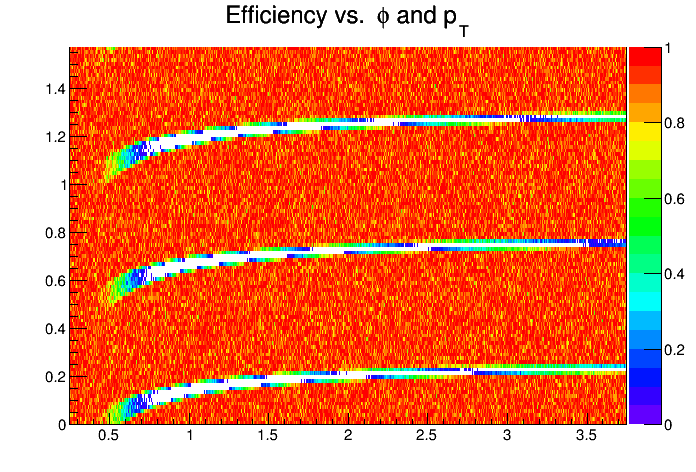 |
I repeated this with everything the same except doubling the size of the gap between sectors to π/120. This makes it easier to lose tracks in the gap even with curvature, so the dip in efficiency moves to lower pT:
| F=0.5 | 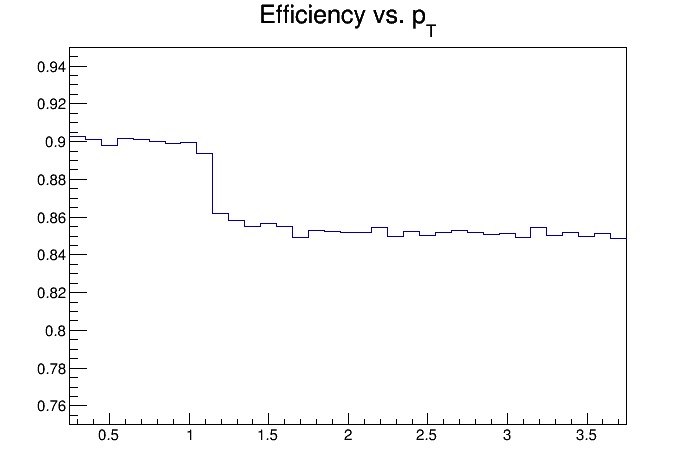 |
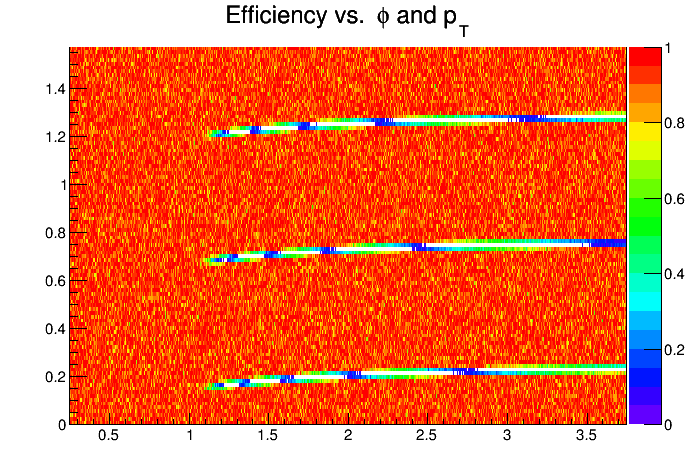 |
|---|---|---|
| F=0.6 | 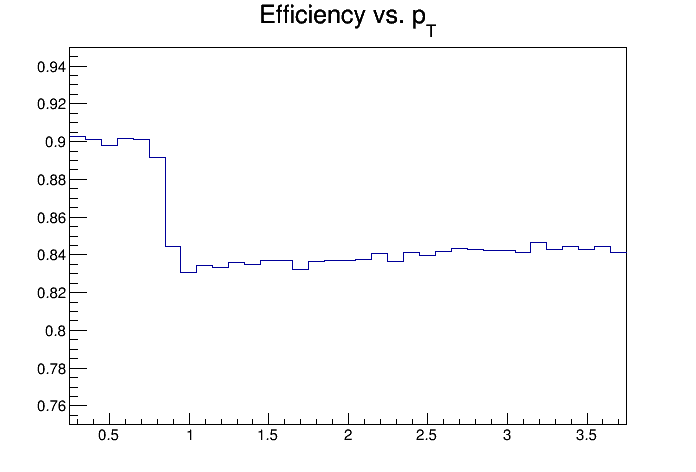 |
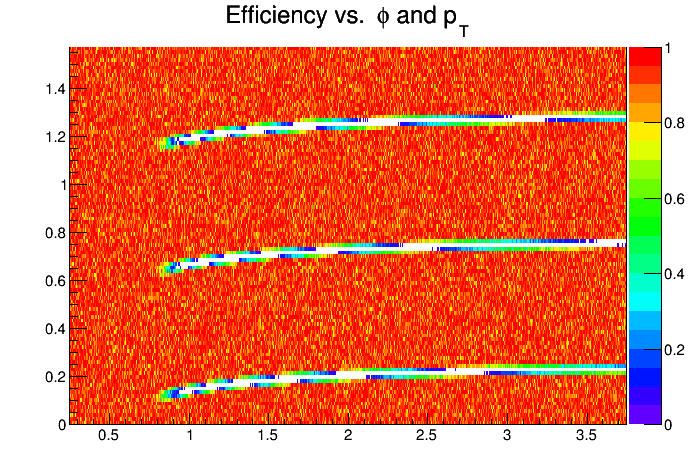 |
| F=0.7 |  |
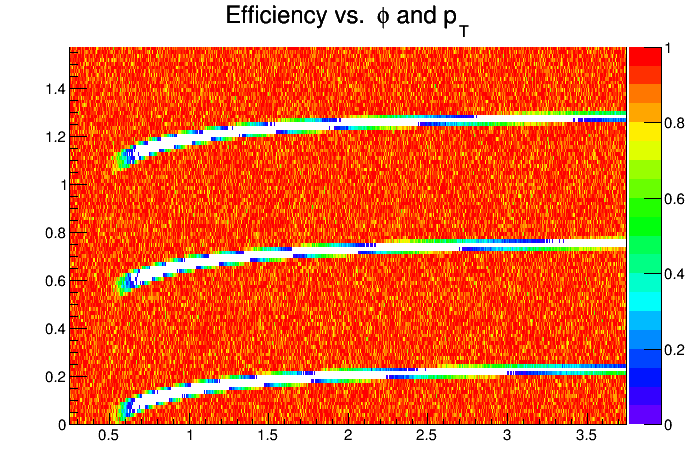 |
| F=0.75 |  |
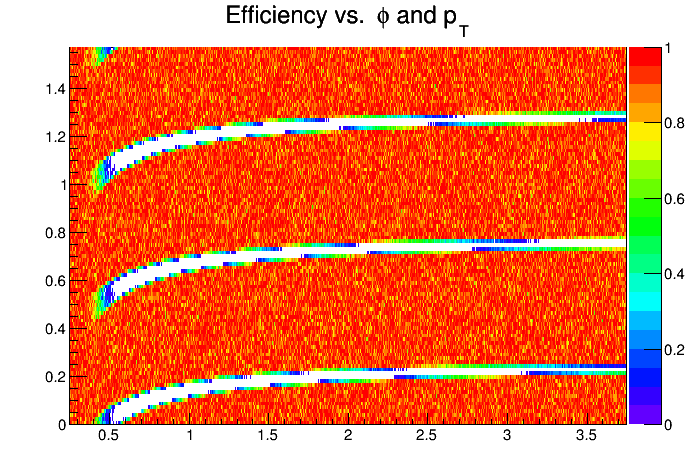 |
| F=0.8 | 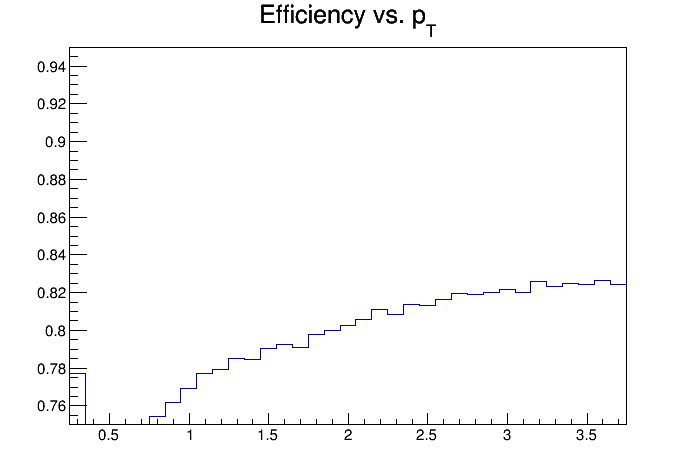 |
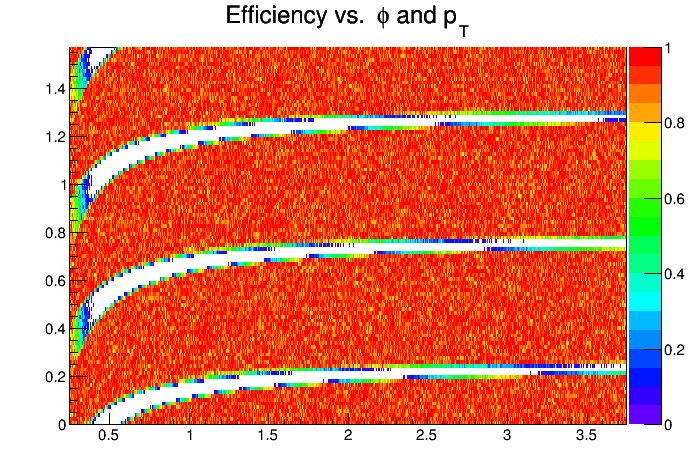 |
The macro used to run the Monte Carlo and generate these plots is attached. Run it compiled as: root -l -b 'rt2561.C+(0.7)'
-Gene
Groups:
- genevb's blog
- Login or register to post comments
